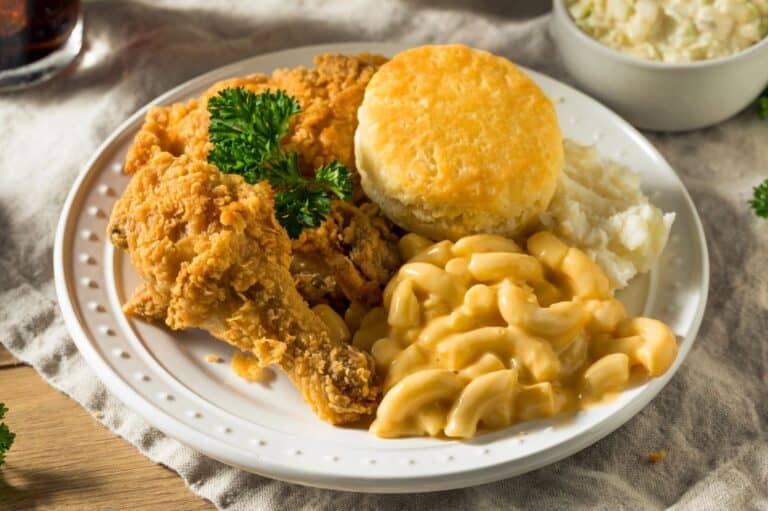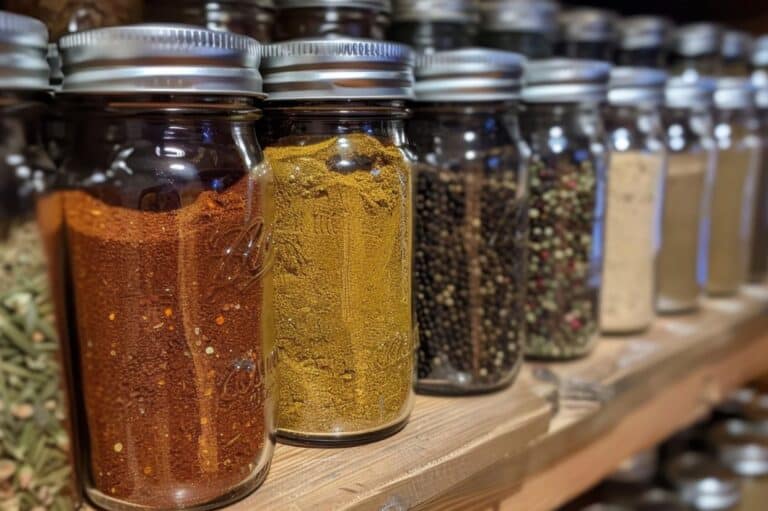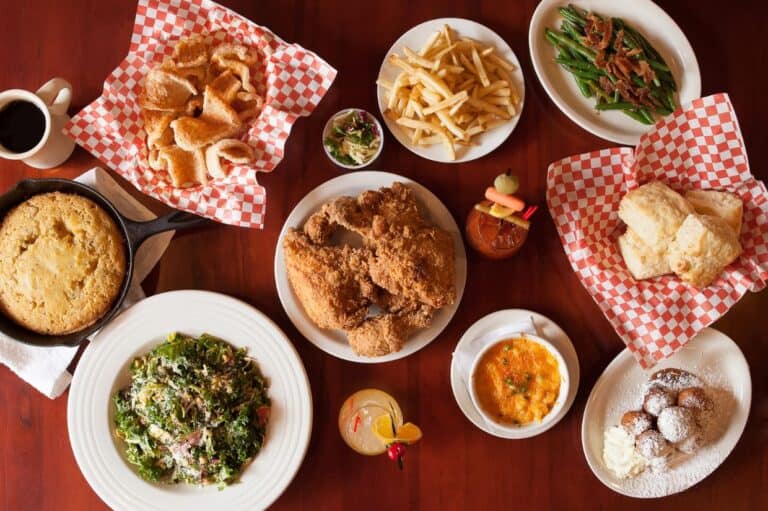Soul food isn’t just about what’s on the plate — it’s about history, family, and tradition. From the smoky richness of potlikker to the comforting warmth of Hoppin’ John, each dish in Southern soul food tells a story. Generations have passed this cuisine down, reflecting the resourcefulness and creativity of African Americans who transformed humble ingredients into dishes full of flavor and heart. Let’s take a closer look at some of these classic soul food staples and explore the rich traditions that make them so special.
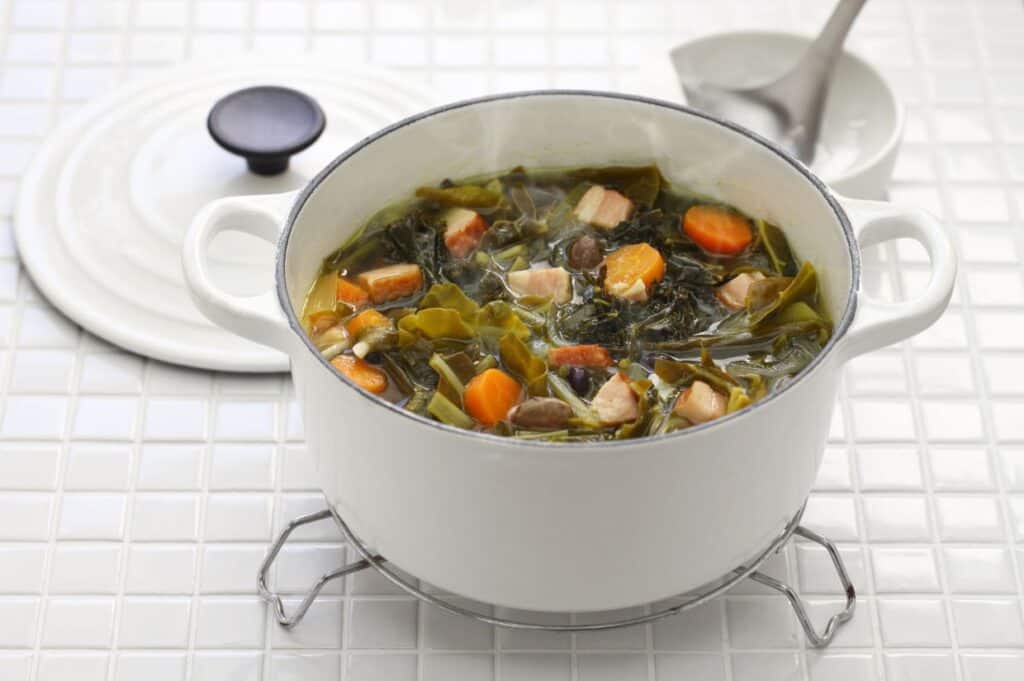
What is potlikker?
Potlikker, or pot liquor, refers to the savory broth that remains after cooking greens like collards, mustard, or turnips. This liquid gold delivers a nutrient-packed punch and brims with flavor. Enslaved Africans and their descendants, often given the less desirable parts of vegetables and meats, transformed every ingredient into something deeply nourishing and flavorful.
People traditionally soaked cornbread in potlikker or drank it straight from a bowl. During leaner times, every drop mattered. This dish stands as a reminder of how soul food stretches ingredients to make the most of them. What others might have discarded, African Americans cherished, turning it into a comfort that brought families together around the table.
Collard greens: The star of the South
Speaking of potlikker, collard greens take center stage in soul food. Cooks often slow-cook these leafy greens with ham hocks or bacon, infusing them with a smoky, savory depth. These greens didn’t originate in the U.S.; they likely came from Africa, arriving during the transatlantic slave trade.
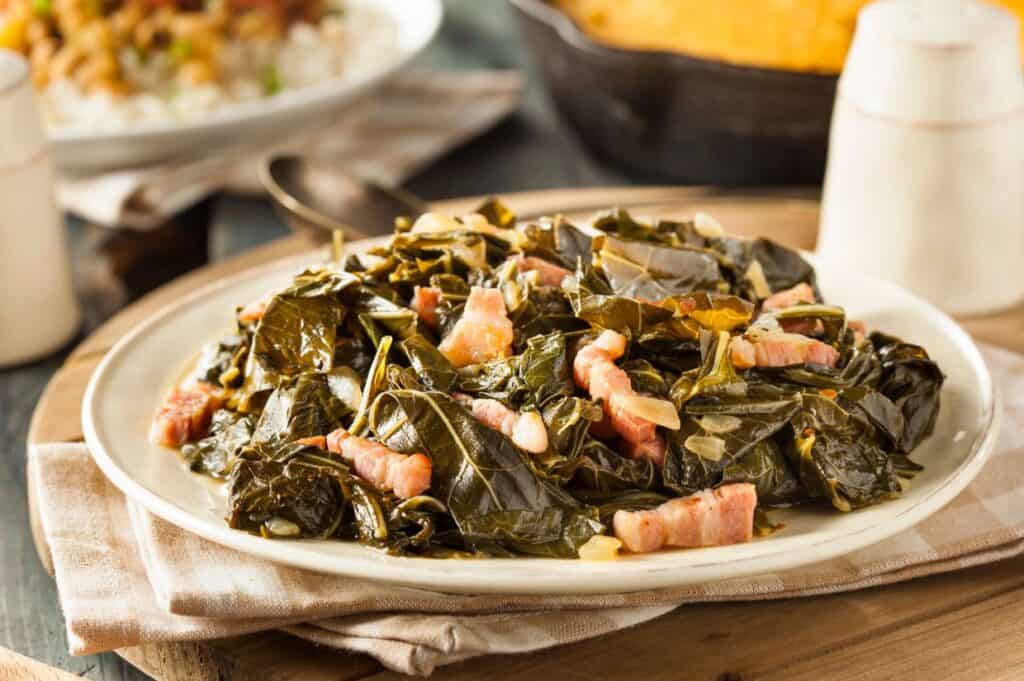
Soul food traditions prepare greens through low and slow cooking, softening tough leaves and unlocking their flavor. Cooks serve them alongside cornbread, fried chicken, or ribs, making greens the unsung hero of a Southern plate. And of course, the potlikker left behind becomes a prize in itself.
Cornbread: The perfect partner
Cornbread and soul food go hand in hand. Whether sweet or savory, skillet-fried or oven-baked, cornbread always accompanies dishes to soak up sauces and potlikker. African Americans in the South relied on cornmeal as a staple because it was affordable, filling, and adaptable to various dishes. Some families crumbled cornbread into buttermilk, while others served it as a side.
Cornbread embodies soul food’s roots in necessity. It’s simple yet essential, offering sustenance with heart. Just like other soul food classics, cornbread recipes vary by family. Some add sugar, others swear by cast-iron skillets, and a few prefer a looser, almost spoonbread texture.
Hoppin’ John: Good luck in a bowl
Now, let’s explore Hoppin’ John, a dish steeped in the promise of good fortune. People enjoy this New Year’s Day tradition, made with black-eyed peas, rice, and pork, and seasoned with onions, garlic, and a hint of heat. Black-eyed peas symbolize coins, and eating this dish on the first day of the year is believed to bring prosperity.
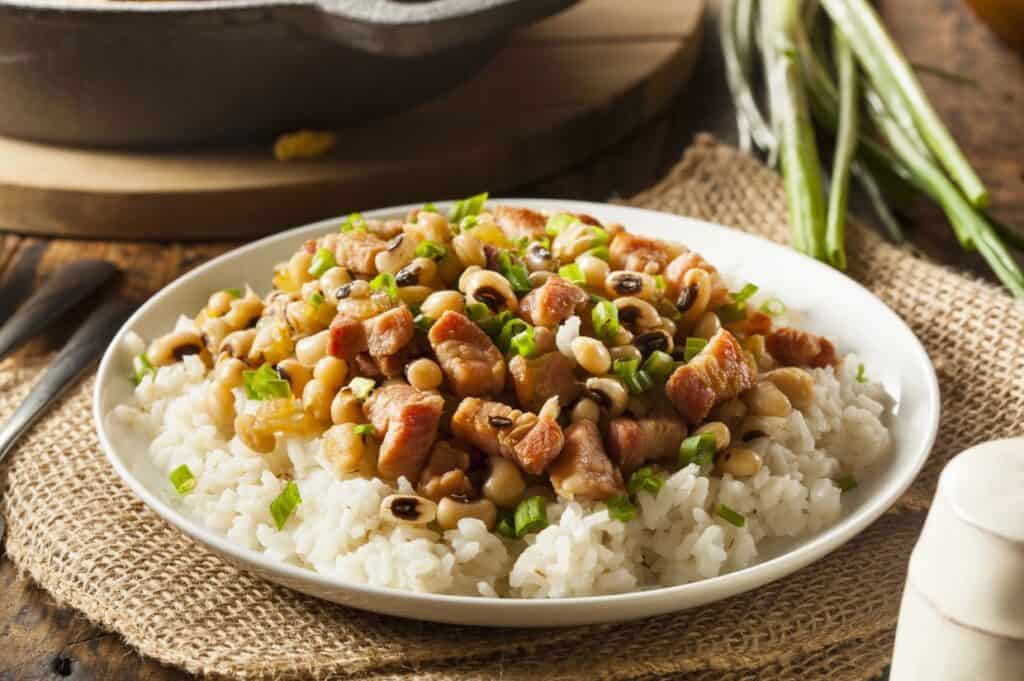
The Gullah Geechee people, descendants of enslaved Africans living on the coastal islands of South Carolina and Georgia, introduced this tradition. They brought the West African practice of combining rice and beans, which evolved into Hoppin’ John. This dish highlights how African, Native American, and European ingredients came together in the Southern kitchen to create something uniquely American.
Fried chicken: A Southern icon
No conversation about soul food feels complete without mentioning fried chicken. This crispy, juicy comfort food represents the heart of Southern cuisine. Enslaved Africans working in Southern kitchens adapted frying techniques, seasoning chicken with available spices to create this iconic dish.
Soul food traditions often coat fried chicken in buttermilk and spices, creating an irresistible crunchy crust. Whether served solo or as part of a larger spread, fried chicken draws people in and keeps them coming back for more.
Mac and cheese: Creamy, cheesy, comfort
Southern-style mac and cheese delivers far more than its boxed counterpart. Cooks layer gooey cheese and bake it to golden perfection, making it a soul food favorite. Rich and indulgent, this dish typically combines a blend of cheeses, eggs, and cream.
While mac and cheese has European origins, African American kitchens elevated it into a Sunday dinner staple and a must-have for special occasions. It’s another example of how soul food blends influences from many cultures, transforming something familiar into a showstopper.
Sweet potato pie: A slice of tradition
Sweet potato pie often crowns soul food spreads as its ultimate dessert. African Americans embraced sweet potatoes, native to the Americas, as a substitute for pricier pumpkin. Spiced with cinnamon, nutmeg, and vanilla, sweet potato pie brings warmth and flavor to family gatherings and holiday celebrations.

This pie connects generations with memories of Thanksgiving and Christmas. Like many other soul food classics, it relies on simple ingredients but carries a richness rooted in tradition and taste.
The legacy of soul food
Soul food doesn’t just reflect dishes — it tells the stories of the people who created them. Born from hardship and resilience, this cuisine allowed African Americans to thrive while honoring their past. Today, soul food influences the culinary world far beyond the South. Chefs celebrate it by putting modern spins on traditional recipes.
At its core, soul food remains about family, community, and sharing. It’s about gathering around the table, passing down recipes, and preserving a culture that profoundly shaped American cuisine.
The next time you enjoy greens, fried chicken, or sweet potato pie, remember the history behind each bite. These dishes connect us to the creativity, resilience, and love of the people who shaped them.
